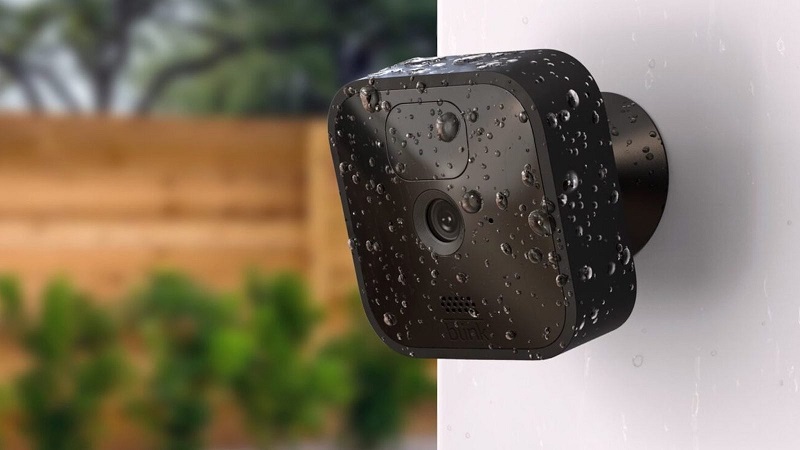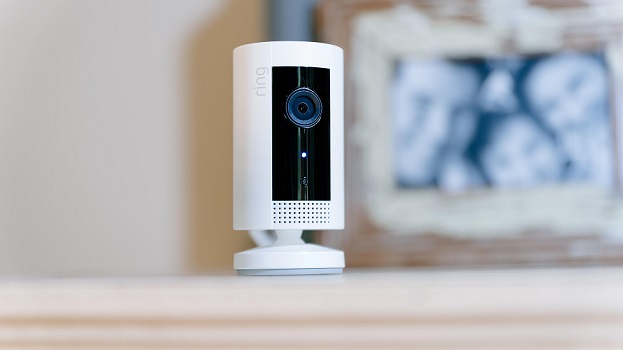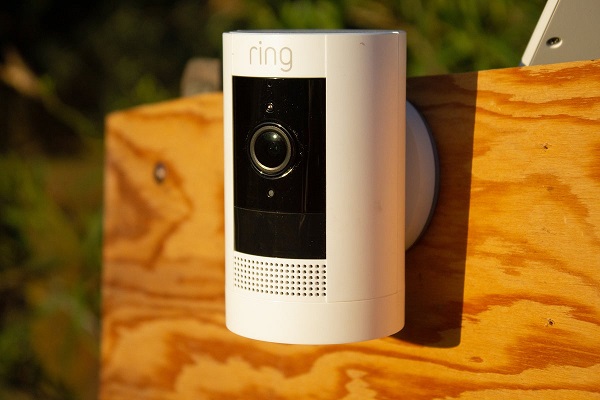Blink and Ring are amongst the most popular security cameras in the market. Although they manufacture high-quality products that appear similar on paper, there are some differences that a user ought to be aware of.
Ring is an Amazon Owned Company and entered the security camera market back in 2013. It started out as an Independent venture and was acquired by Amazon in 2018. Their products include security cameras, door alarms, trackers, and even range extenders. Ring is ideal if you are someone who is not willing to pay over the odds for a security system and don’t want to be involved in lengthy contracts. Nowadays, they are focusing on smart home integration.
Blink was established way back in 2009 and was eventually bought by Amazon in 2017. Blink does not have a product range as wide as Ring. They focus only on Security Cameras and do not have other equipment like sensors and alarms. Moreover, their cameras are not meant for professional monitoring.
Here, we will be viewing the advantages and disadvantages of the respective companies’ offerings. Read on to find out more.
Outline
ToggleBlink Vs. Ring Comparison Table
| Features | Ring | Blink |
| Monitoring price | 10 Dollars per month | Not available |
| Cost Upfront | Equipment Cost | Equipment Cost |
| Battery Life | Around 6 months | Around 2 years |
| Products | Cameras, Sensors, Alarms | Cameras Only |
| Installation | DIY | DIY |
Blink Devices
1. Blink Outdoor
Blink Outdoor is best used for backdoor or front door monitoring. The wireless camera can be placed on trees, walls, and on ceilings. You also get a swivel-mount with the device. Moreover, the camera is waterproof and has an IP65 rating which means that it won’t be harmed by rain and snow.
There is also a 2-way Audio feature that lets you communicate with other members of the family. The audio quality is pretty impressive, but there is no noise cancellation which could make communication tricky during windy weather. The resolution is 1080p, which is more than good enough for outdoor monitoring.
The night vision is not the best, and it was impossible to differentiate between faces. Also, the range is not particularly good. The operating temperature of the camera is between -4 and 113 degrees Fahrenheit. You also get temperature alerts. This is a good choice for people on a tight budget and is quite easy to install.
Pros
- Good video quality
- Long battery life
- Not expensive
Cons
- Night vision
- Video storage is limited
2. Blink Indoor
In appearance and features, Blink Indoor has a lot of similarities with the outdoor version. However, the key difference is the fact that this camera is not waterproof. The battery life and the video resolution is exactly the same. It is also a wireless camera, and you don’t need to worry about cords while setting it up. It can also send temperature alerts and has cloud and local video storage options as well.
Pros
- Easy to install
- Cheap
- Battery life
Cons
- Uses only Wi-Fi
- Professional monitoring unavailable
3. Blink Mini
This camera measures less than 2 inches in size, but it is still quite powerful and affordable. It is also capable of recording videos like the Blink Outdoor and features the same app functionality. The major downside is the fact that this camera cant be placed everywhere. It needs to be kept near a power outlet.
Also, there are some extra costs associated with this camera. It charges 3 dollars per month for the cloud storage feature. This cost came into existence in 2021. If you bought a Blink Mini during 2020 or earlier, then you will get cloud storage for free.
Even if you have not paid for cloud storage, you will get alerts when something enters the motion zones.
Pros
- Simple design
- Infrared night vision
- Activity Zones
- Quite affordable
Cons
- local storage is not available.
- Lack of audio detection.
Ring Devices
1. Ring Indoor
Ring Indoor is a camera designed exclusively for the budget customer that comes with a whole host of different features. It is fairly small and can be placed pretty much everywhere. The installation is a breeze as it is a plug-and-play device. The video resolution is 1080p HD like most of the Ring cameras. Other features include two-way talk, infrared night-vision, and motion alerts.
The Ring neighbors app keeps you updated on any interesting activities in your neighborhood. However, you need a subscription for video recording and for recordings based on motion triggers. The basic plan costs only 3 dollars per month, and the video lasts for 60 days on a camera. Moreover, there is no sound detection as well.
Pros
- Video quality
- Motion detection
- Affordable camera
- Two-way audio
Cons
- Only for indoor use
- field of view (115 degrees)
2. Ring Stick Up Cam
The Stick Up Cam is a very versatile camera that can be used both indoors and outdoors. It comes with a lot of quality features and is available for less than 100 dollars.
There are 4 different versions in the stick up cam-Battery, Solar, Elite, and plug-in. The difference lies in how they are powered. The battery version features a quick release battery pack with a crisp live feed and is suitable for outdoor and indoor usage.
The Solar model uses solar energy and is a great choice for people in the tropics. It has features like audio privacy and privacy zones that can be customized.
The Elite version uses Power over the Internet and is a good choice if you have a good Wi-Fi connection. There is no free cloud storage available for these cameras, and they do not work with Siri and Google assistant.
Pros
- Wireless
- Siren
- Easy to install
Cons
- Costly
- Requires cloud subscription for video storage.
3. Ring Spotlight Cam
The features in the Spotlight cam include active noise cancellation, 140-degree field of view, 1080p resolution, and the super bright LED. The LED lights can be customized. You can also combine this light with motion-activated lights.
The camera is powered using a battery, but there are also solar and wired versions as well. The battery version is the best in our opinion, but it is ultimately the user’s preference.
There is a siren that is emitted at 110 Decibels which can scare off intruder animals. The operating temperature is between -5 and 120 degrees Fahrenheit.
Pros
- Two-way audio
- Bright LED
- Motion Zones
- Wireless
Cons
- Recording requires subscription
4. Ring Floodlight Cam
The floodlight cam has a floodlight along with the other usual features that you will find in a Ring camera. These are quite helpful in keeping your place protected during the night. It is one of the best outdoor cameras available.
Moreover, the floodlights are motion-triggered and can identify a person or an object. The resolution is 1080p, and the night vision is also quite good.
You can also use the zoom feature available in the app. Moreover, there is a 110-decibel siren that can be controlled remotely. It is fairly loud and can be useful for alerting any danger.
The floodlights can be turned off if needed. The neighbor’s app can be used to share any peculiar or interesting images with your neighbor circle.
Pros
- Loud siren
- Floodlights
- Motion alerts
- Two-way audio
Cons
- Subscription needed to access recorded videos
Difference Between Blink and Ring
1. Design
Both Blink and Ring are quite good when it comes to making security cameras. However, Blink has significantly fewer models to choose from than Ring. Ring has varied models and more features compared to Blink. As a result, Ring is better than Blink in this category.
2. Video Quality
All the Ring cameras other than the Stick Up Cam support 1080p resolution. All the Blink cameras on the other side support 1080p. However, the night vision quality in Ring exceeds Blink. Some of the Ring cameras even have colored night vision which is not available in Blink.
3. Professional Monitoring
Between these 2 companies, only Ring offers professional monitoring. Their base plan costs 10 Dollars per month. Blink, on the other hand, offers only self-monitoring.
4. Smart Platform Integration
Both Blink and Ring work with Amazon Alexa. Additionally, Ring is also compatible with the Google Home, Samsung SmarThings, and the Apple Home Kit as well. Moreover, Ring also has smart home integration like lights, smart locks, remote garage door, and much more.
5. Storage
The two companies offer cloud storage, but Blink also offers local storage as well.
6. Field of View
Most of the Ring cameras have a 140 degree Field of view. The only exception is the Stick-up cam with an 80-degree field of view. For Blink, the field of view is 110 degrees.
7. Price
Both these companies offer budget-friendly products. The Ring indoor camera is cheaper than the Blink one, and the outdoor cameras are priced similarly. However, Blink offers free cloud storage, which will significantly reduce costs in the longer run.
8. Warranty
Both the companies provide a 1-year warranty, and they also offer exchange programs. Even the customer service is quite good.
Final Words:
Both Blink and Ring are market leaders when it comes to home security cameras. Ring offers a wider range of products to choose from, and if you need to choose one, we would recommend opting for a Ring camera. For any queries regarding the content, do write to us.








